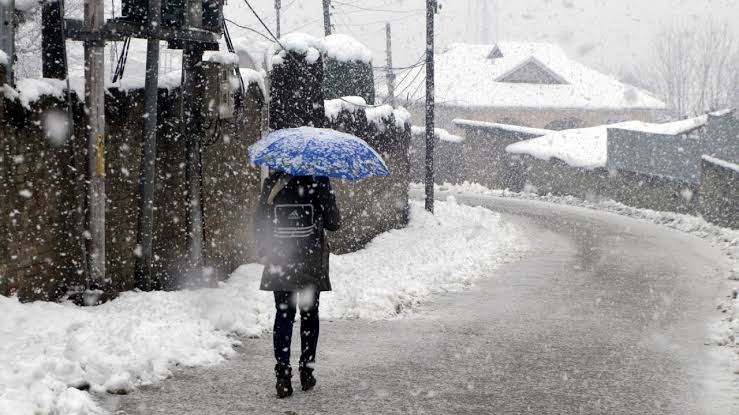Dr. MUSHTAQ AHMAD
My goal in writing this article is to do an analysis that highlights that the present opportunities and future challenges to create a sustainable food system and pathways for reaching zero hunger by 2050. More than 2 billion people, particularly in low- and middle-income countries, lack regular access to a sufficient supply of nutritious food, according to the report. Unauthorized access is a problem in high-income countries as well, affecting 8% of the population in Northern America and Europe. This calls for a major revamp of the food systems in order to provide a growing global population with sustainably produced healthy meals.
Important information and statistics related to food scarcity
- In 2021, there were 821.6 million hungry people worldwide. (Or one in nine)9 million people live in Asia, 256.1 million in Africa, and 42.5 million in Latin America and the Caribbean.
- There are 2 billion (26.4%) people who are moderately or severely food insecure.
- About 20.5 million infants were born with low birth weights (one in seven)
- Stunting (low height-for-age) affects 148.9 million (21.9%) children under the age of five.
- 5 million (7.3%) children under the age of 5 are affected by wasting (low weight-for-height).
- 40 million (5.9%) children under the age of 5 are overweight (high weight for height).
- There are 338 million school-age children and teenagers who are overweight.
- 672 million adults (13% or 1 in 8 persons) are fat
By 2050 the world’s population will reach 9.1 billion, 34 percent higher than today. Nearly all of this population increase will occur in developing countries. Urbanization will continue at an accelerated pace, and about 70 percent of the world’s population will be urban (compared to 49 percent today). Income levels will be many multiples of what they are now. In order to feed this larger, more urban and richer population, food production (net of food used for biofuels) will increase by 70 percent. Annual cereal production will need to rise to about 3 billion tons from 2.1 billion today and annual meat production will need to rise by over 200 million tons to reach 470 million tonnes. This research makes the case that if the necessary investments are made and agricultural production-friendly policies are implemented, the increase in food production that is necessary can be realized. But raising production alone won’t provide food security.
To achieve them, both donor programmes and the budgets of developing countries must be significantly reallocated. Additionally, measures that assist and motivate farmers in emerging nations to boost their investment in the sector will be needed. Only 20% of the required output increases in developing nations would result from an increase in arable area; the remaining 80% would come from higher crop yields and crop intensities since the world’s food needs cannot be met by a continuing linear growth in yields that follows the pattern developed during the previous 50 years. A valuable synergy exists between adaptation and mitigation, and while agriculture will need to adapt to climate change, it can also assist lessen its effects.
According to a recent study, if biofuel production continues to grow at its current rate, there would be 3 million more undernourished preschoolers in Africa and South Asia in 2050 than there would have been otherwise. In order to lessen the competition between food and fuel for limited resources, regulations promoting the use of food-based biofuels need to be revisited. To ensure that important investment and policy decisions are made and properly implemented, it must organize political will and create the required structures. Acting is best done right away. If we look inside the box and continuously use this small set of crops, viz. rice, wheat, maize, and barley, it is very difficult to achieve zero hunger from such small set of crops.
Everything has a limit and a capacity, and scientists have increased production for the primary crops not only double but 8 times from last 50 years through both traditional and innovative breeding techniques. As for our Kashmir valley research institute MRCFC-Khudwani SKUAST-Kashmir is concerned, this increases the rice yield from 5quintals/ha to 110 q/ha from a journey of 1950-2022 that is highest as compare to other states of India. If you look at the graph below (Fig-1), you’ll see that the population of developing countries is nearly double by 2050 what it is at the moment.
Inside box strategies we must follow
A number of crucial leverage points could be made more restrictive to minimize the yield gap. According to a study, current agricultural land is not producing to its full capacity in many regions of the world, generating 50% less than it could. The need to clear land for agriculture would be diminished, and 850 million more people would be fed, if the gap between what is produced and what could be produced was closed.
Use Fertilizer More Efficiently
The good news is that, according to research findings, it may be possible to use 13–29% less nitrogen and phosphorus fertilizer on wheat, rice, and maize crops while maintaining the same yields. The timing, location, and kind of fertilizer might all be changed to increase efficiency.
An increase in low water productivity
This could be solved by upgrading irrigation systems and growing crops that use less water. For instance, among the crops that require the most water are rice and sugarcane e.g. tree hunger when plant wants water but we still followed flood irrigation.
Foods to Be Consumed Directly
Crops that are converted for use as animal feed or other non-food purposes lose a lot of their caloric efficiency. Scientists from all across the world calculated that these crops might produce enough calories to feed 4 billion people if they were used directly as food. Many presumptions are made in this study, including that people are willing to alter their diets, that wealthier people are prepared to take major steps to reduce food waste, and that impoverished countries lack the political and financial resources to close yield gaps.
Stop wasting food
A third of all food consumed worldwide is lost or wasted due to a variety of issues, such as improper cooking or inadequate storage. The United States is one of the biggest culprits for this and needs an agricultural land base that is 7 to 8 times larger than a land base in India to compensate for this waste. Reducing food waste in the United States, India, and China could feed 413 million people per year, according to recent research. It will take a multifaceted and multidisciplinary approach to combat hunger.
Additionally, I offer some unconventional ideas that could end hunger by 2050, especially in poorer nations, as our population is growing at an alarming rate and scientists are facing a significant issue. We must therefore adopt novel solutions because our natural resources, particularly land and water, are drastically depleting. If our leaders want to see this country free from hunger and domestic violence by 2050, they must adopt policies and raise money from grassroots levels for such unconventional strategies.
(To be continued….)
(Author is Scientist- MRCFC-Khudwani, SKUAST, kashmir. Email id: [email protected])








